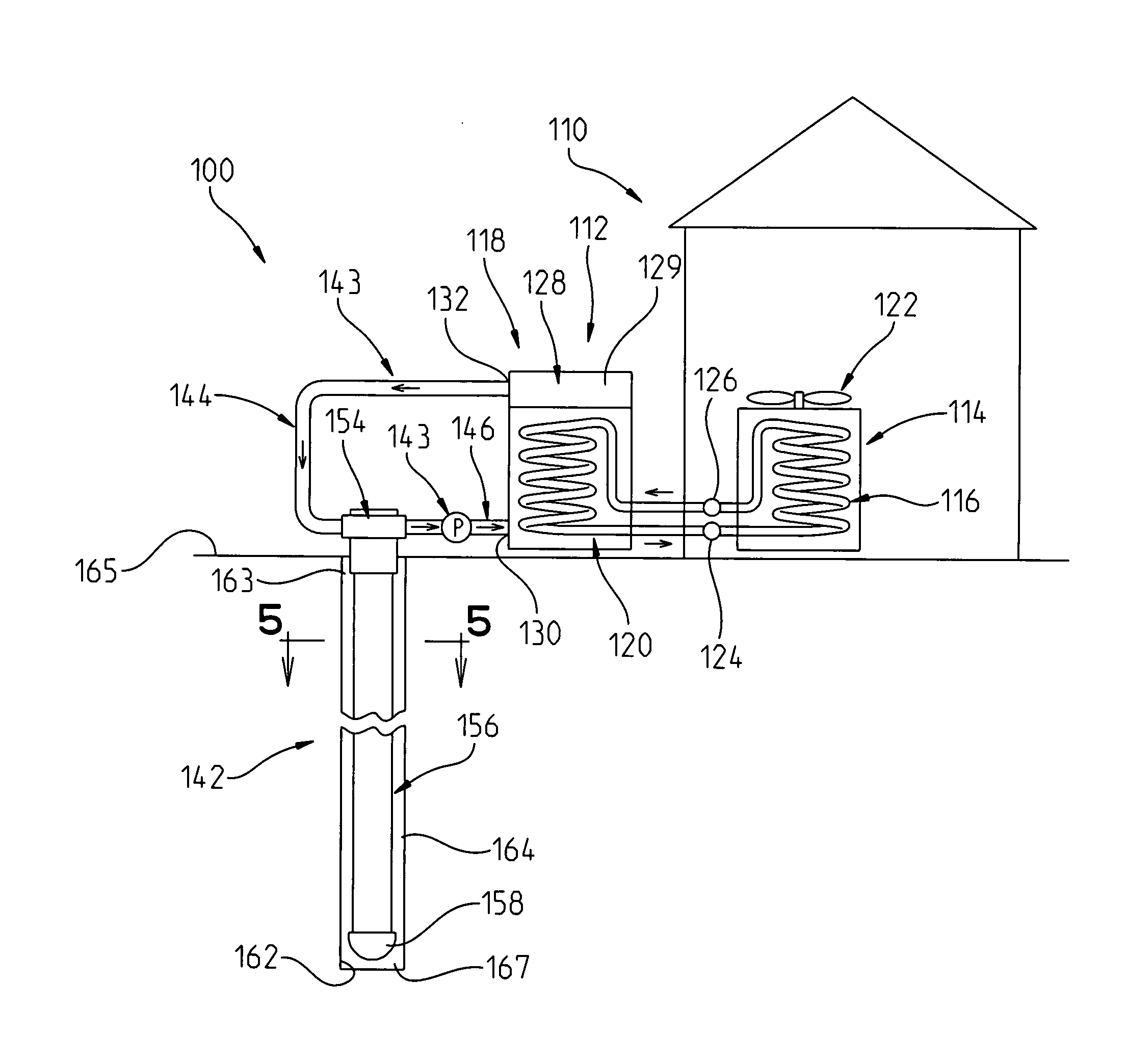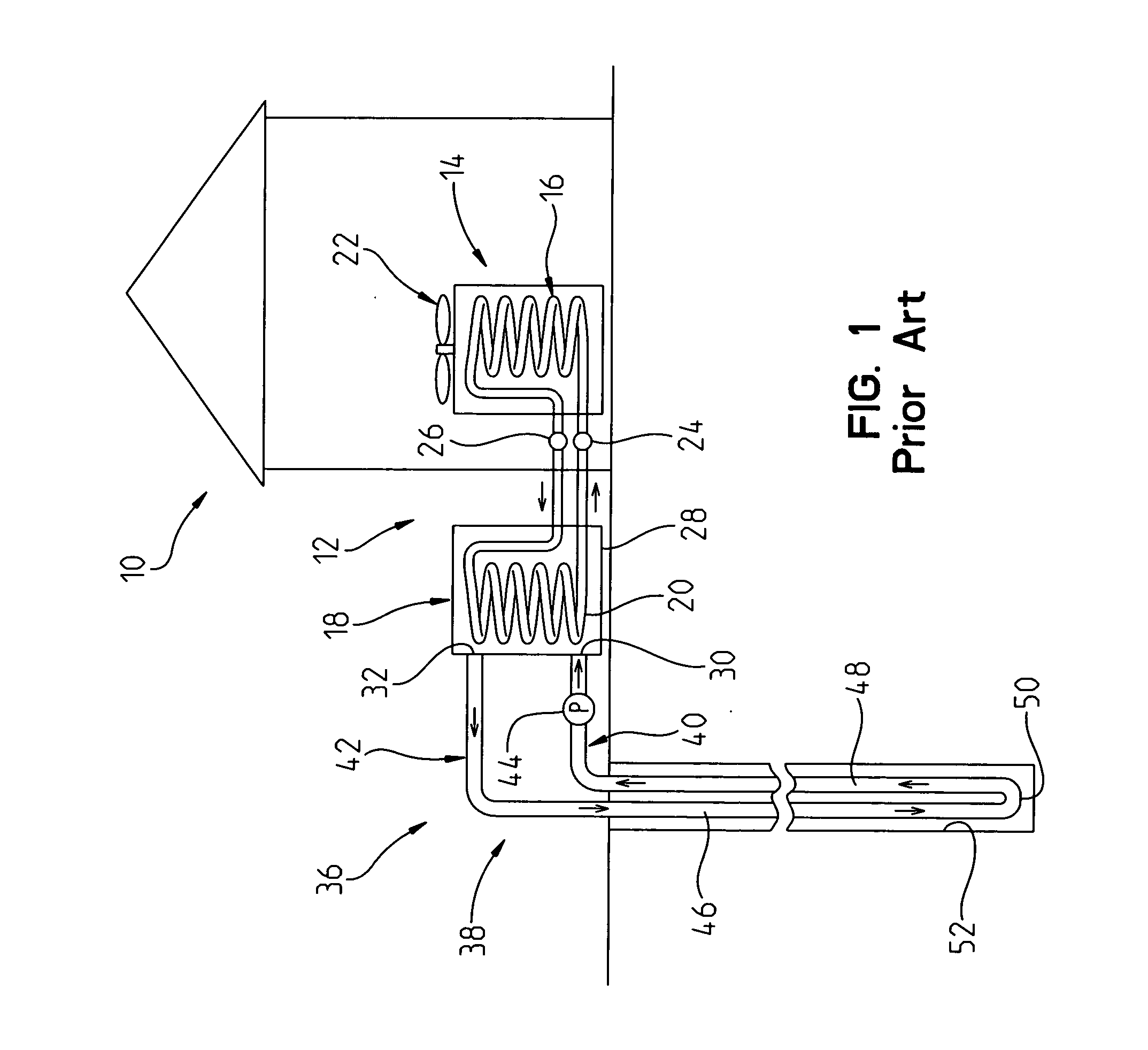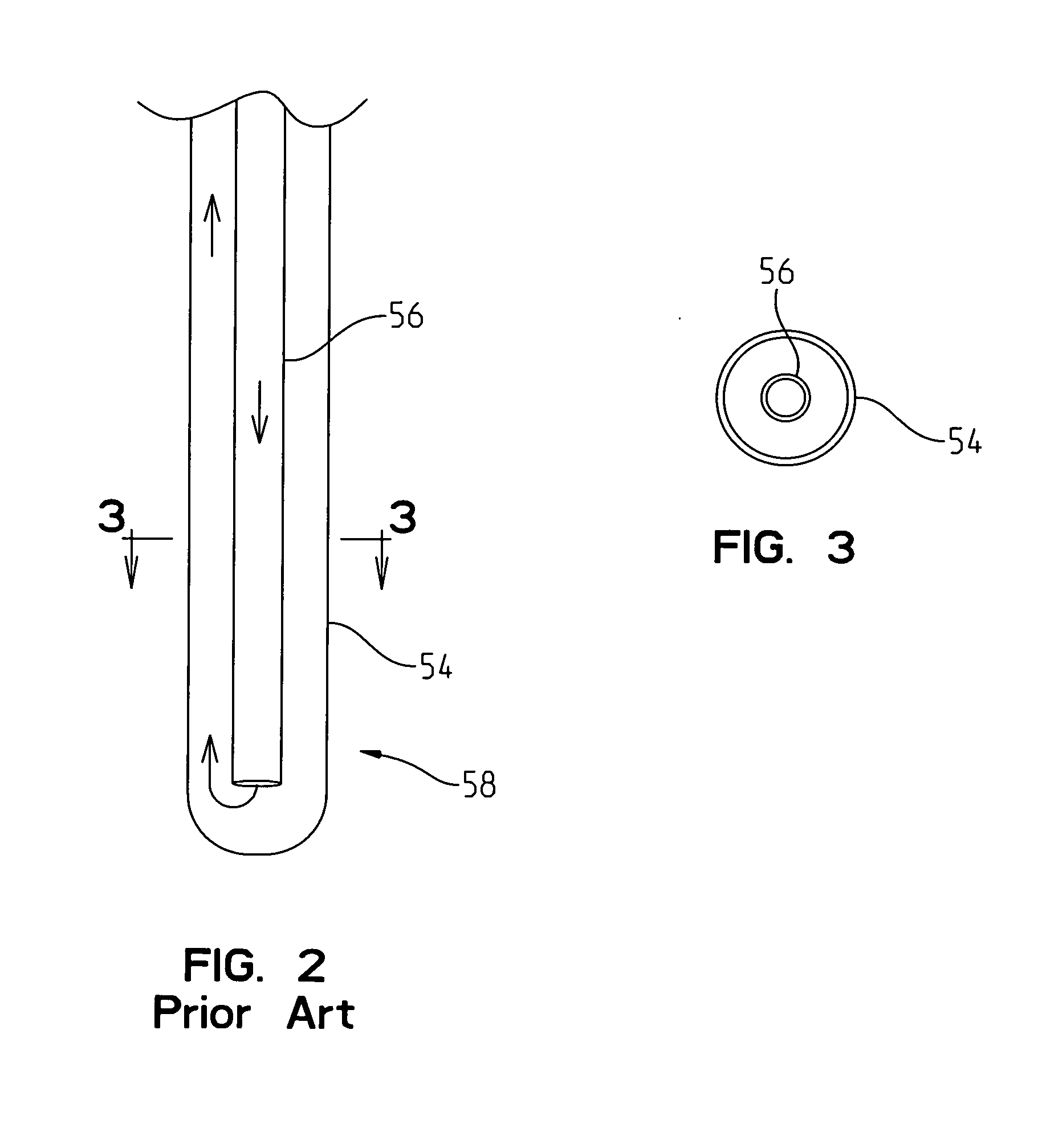Geothermal pipe system
- Summary
- Abstract
- Description
- Claims
- Application Information
AI Technical Summary
Benefits of technology
Problems solved by technology
Method used
Image
Examples
embodiment 400
[0086]A second alternate embodiment 400 is shown in FIGS. 22 and 23.
[0087]The device shown in FIGS. 22 and 23 comprises a modification of a bisect type geothermal pipe system. In particular, the pipe 400 comprises a three-chamber pipe having a relatively larger inflow section 404, a relatively smaller outflow section 406, a pair of dividing walls 408, 410 to divide the inflow section 404 from the outflow section 406, and a central passageway 412 through which grout can travel. Grout can travel axially down through a central pipe 412, and either out the bottom of the pipe (and the bottom of the end cap through its central aperture) or alternately, out one of the side aperture 265 that are formed in the pipe 210. The side passageways allow grout being pumped down the pipe, to flow out one of the side flow aperture 265, and into the space S that exists between the exterior of the outer wall 416 of the pipe, and the interior surface of the wall W of the bore hole.
[0088]It will be noted ...
embodiment 540
[0096]FIG. 29 shows another alternate embodiment, that is a variation of the alternate embodiment shown in FIG. 28. The embodiment 540 shown in FIG. 29 comprises a three-piece pipe, having a kidney-shaped inflow portion 542 that is generally similar to inflow portion 522 (FIG. 28) and an outflow portion 544 that is generally similar to outflow portion 524 (FIG. 28), and a third piece that comprises a generally circular cross-section, cylindrical axially extending and centrally disposed grout pipe 546.
[0097]FIG. 30 shows another alternate embodiment geothermal pipe 560. The geothermal pipe 560 includes an inflow pipe portion 562 and an outflow pipe portion 564 that are generally similarly sized, rather than differently sized, such as in FIG. 1-29 where the inflow tube has a larger volume than the outflow tube. Although the version shown in FIG. 30 would not have the relative flow rate differential advantages of the other embodiments, it would have an advantage of being less expensive...
embodiment 580
[0098]The final geothermal pipe embodiment 580 shown in FIG. 31 is generally similar to pipe 560 shown in FIG. 30, as the inflow and outflow tubes 582, 584 are both kidney-shaped and are generally have the same cross-sectional shape and size.
[0099]However, the pipe 580 shown in FIG. 31 also includes a separate, third component that comprises a grout pipe 586 that is centrally disposed and extends axially down the length of the pipe.
PUM
 Login to View More
Login to View More Abstract
Description
Claims
Application Information
 Login to View More
Login to View More - R&D
- Intellectual Property
- Life Sciences
- Materials
- Tech Scout
- Unparalleled Data Quality
- Higher Quality Content
- 60% Fewer Hallucinations
Browse by: Latest US Patents, China's latest patents, Technical Efficacy Thesaurus, Application Domain, Technology Topic, Popular Technical Reports.
© 2025 PatSnap. All rights reserved.Legal|Privacy policy|Modern Slavery Act Transparency Statement|Sitemap|About US| Contact US: help@patsnap.com



